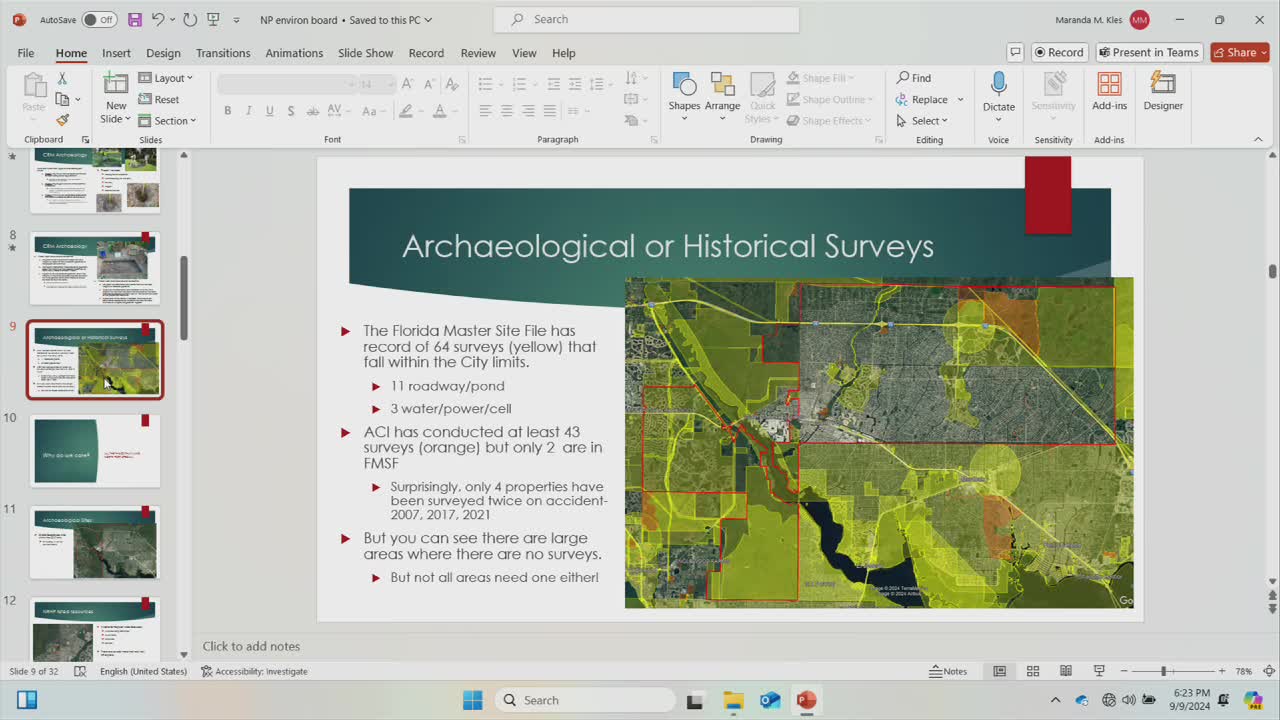Major project raises concerns over archaeological significance
September 09, 2024 | North Port, Sarasota County, Florida
This article was created by AI summarizing key points discussed. AI makes mistakes, so for full details and context, please refer to the video of the full meeting. Please report any errors so we can fix them. Report an error »

In a recent government meeting, officials discussed the implications of a past archaeological survey conducted in the South Lake Union (SLU) area, highlighting the need for updated predictive models to assess potential archaeological significance in light of upcoming development projects. The survey, which took place around 2018, was initially deemed narrow in scope and focused primarily on drainage and roadway improvements, leaving many adjacent areas unexamined.
Participants expressed concern over the lack of thorough archaeological assessments, particularly regarding the historical significance of sites related to the old turpentine mill and the surrounding regions. The conversation underscored the challenges municipalities face when balancing development with the preservation of potentially significant archaeological sites. It was noted that while city-owned properties may not require surveys unless they fall within designated sensitive areas, federal funding for projects could trigger the need for more comprehensive evaluations.
The discussion also touched on the importance of updating predictive models that guide archaeological assessments. Current models rely heavily on known sites, which may not accurately reflect the archaeological potential of areas slated for development. Officials pointed out that cities like Sarasota and Miami have successfully updated their predictive models to better identify areas that warrant further examination.
As the city prepares for a major project in the SLU area, the need for a thorough review of past surveys and the implementation of updated predictive models was emphasized. This approach aims to ensure that significant archaeological resources are not overlooked as development progresses, fostering a balance between growth and historical preservation.
Participants expressed concern over the lack of thorough archaeological assessments, particularly regarding the historical significance of sites related to the old turpentine mill and the surrounding regions. The conversation underscored the challenges municipalities face when balancing development with the preservation of potentially significant archaeological sites. It was noted that while city-owned properties may not require surveys unless they fall within designated sensitive areas, federal funding for projects could trigger the need for more comprehensive evaluations.
The discussion also touched on the importance of updating predictive models that guide archaeological assessments. Current models rely heavily on known sites, which may not accurately reflect the archaeological potential of areas slated for development. Officials pointed out that cities like Sarasota and Miami have successfully updated their predictive models to better identify areas that warrant further examination.
As the city prepares for a major project in the SLU area, the need for a thorough review of past surveys and the implementation of updated predictive models was emphasized. This approach aims to ensure that significant archaeological resources are not overlooked as development progresses, fostering a balance between growth and historical preservation.
View full meeting
This article is based on a recent meeting—watch the full video and explore the complete transcript for deeper insights into the discussion.
View full meeting